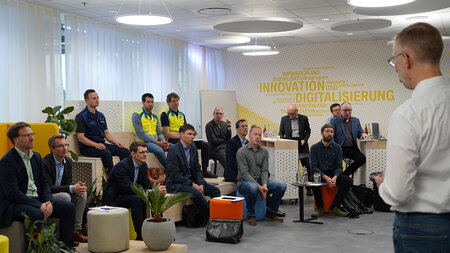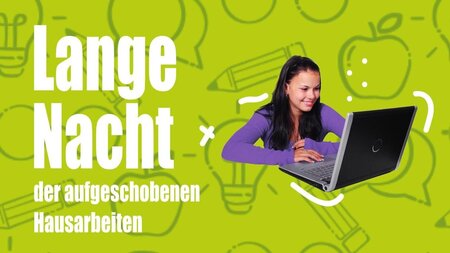Expertise of the Junior Professorship
Description:
Artificial intelligence in ophthalmology aims to support diagnostic processes and therapy decisions for common diseases such as age-related macular degeneration, diabetic macular oedema and retinal vein occlusion. This requires the structured processing of free texts in ophthalmology by means of text mining. AI is also used to analyse images from imaging procedures such as funduscopy and optical coherence tomography (OCT) for biomarkers and pathological conditions.
Methods:
- Rule-based expert systems for diagnosis and therapy support
- Progress modelling using conventional machine learning methods such as decision trees, regression, SVMs, ...
- Image processing using Deep Learning, e.g. deep neural convolutional networks
- Text mining (Information Extraction) and Natural Language Processing (NLP)
- Hexagonal image processing, especially hexagonal convolutional neural networks
Examples of application:
- Recommender system for visual acuity prediction under different therapeutic approaches
- AI-based biomarker detection in optical coherence tomography images
- Participatory design of user interface for diagnostic support in diebetic eye diseases
Projects:
- since 09/2021: MIHUBx - Digital Hub Medicine
- 2018-2021: OphthalVis2.0 – Development of individual therapy approaches for AMD, DME and RVV through analysis of processed mass data with machine learning methods
- 2018-2021: Spektroskopie des Augenfundus
- 2016 - 2019: TOPOs – Therapy prediction through analysis of patient data in ophthalmology
- 2015 - 2016: OphthalVis
Publications:
- 2024: "Visual acuity prediction on real-life patient data using a machine learning based multistage system"
- 2023: "Improving OCT Image Segmentation of Retinal Layers by Utilizing a Machine Learning Based Multistage System of Stacked Multiscale Encoders and Decoders"
- 2017: "Preparing clinical ophthalmic data for research application"
- 2017: "Aufbereitung augenmedizinischer Bild-, Patienten-und Diagnosedaten zum Zwecke der Forschung - Ethikrichtlinien und deren praktische Umsetzung"
Description:
Together with partners from industry and the Chair of Welding Technology at TU Chemnitz, JP Media Computing has been researching since 2017 i.) the video-based characterisation of the melting zone during laser welding and ii) the detection of defects in images after laser processing, e.g. by laser-based cutting (thermal laser separation) of semiconductor wafers.
Methods:- classical rule-based image processing pipelines
- Deep learning, e.g. deep convolutional neural networks
- Hexagonal image processing, especially hexagonal convolutional neural networks
- Simulation of image material as augmentation method for supervised learning procedures
Examples of application:
- High-speed video-based melt zone geometry monitoring during laser welding.
- Fault detection during laser-based cutting, e.g. for semiconductor wafers
Projects:
- LocalizeIT - Lokalisierung visueller Medien
- ESF Landesinnovationspromotion of Tobias Schlosser: Robuste Objektklassifikation zur klinischen sowie industriellen Bild- und Videoverarbeitung auf Basis der hexagonalen Bildrasterung für maschinelle Lernverfahren
- Automatic Visual Defect Inspection in Multiple Domaines using Computer Vision based on Deep Learning
- ESF Landesinnovationspromotion of Michael Friedrich: Simulation von Halbleiter-Wafer-Dicing-Fehlern auf Chips und ihre Anwendung als Augmentierungsmethode für ein Deep Learning basiertes visuelles Inspektionssystem
Publications:
- 2024: Attention Modules Improve Modern Image-Level Anomaly Detection: A DifferNet Case Study
- 2022: Improving automated visual fault inspection for semiconductor manufacturing using a hybrid multistage system of deep neural networks
- 2019: A Novel Visual Fault Detection and Classification System for Semiconductor Manufacturing Using Stacked Hybrid Convolutional Neural Networks
Description:
Since 2014, research has been conducted on AI-supported audio-based classification of sounds and bird calls. Together with the Chair of Media Informatics (TU Chemnitz) and Cornell University, algorithms are being developed to recognise bird species based on their songs. This also resulted in the Birdnet app, which is now widely used with >1 million downloads.
Another topic is intelligent indoor noise recognition, which is part of Ambient Assisted Living (AAL). On the one hand, the underlying algorithms are being researched and improved; on the other hand, participatory design with different user groups, such as the over-60 generation, is being used to research the extent to which this technology can provide more safety in the home environment, for example. The application in care contexts is also an issue here.
Methods:- Deep Learning, e.g. deep neural convolutional networks
- User-centred design of applications / human-technology interaction
Examples of application:
- Noise detection, e.g. people talking, dogs barking, showering, teeth brushing
Projects:
- LocalizeIT
Publications:
- 2024: TUC Media Computing at BirdCLEF 2024: Improving Birdsong Classification Through Single Learning Models
- 2023: Improving Learning-Based Birdsong Classification by Utilizing Combined Audio Augmentation Strategies
- 2021: TUC Media Computing at BIRDCLEF 2021: Noise augmentation strategies in bird sound classification in combination with DenseNets and ResNets
- 2019: A Real-Time Demo for Acoustic Event Classification in Ambient Assisted Living Contexts
- 2017: Large-Scale Bird Sound Classification using Convolutional Neural Networks
Description:
The topic deals with software and method development and evaluation for single molecule (video) microscopy and spectroscopy to study the folding and binding processes of biomolecules such as ribonucleic acids (RNA). Specifically, method optimisation for the localisation of molecules, kinetic and thermodynamic (time series) analyses using hidden Markov models, clustering and statistical methods. Essential algorithms are available with optimised parameters as part of a toolchain, within the user software with user interface "MASHFRET".
Methods:- Time series analysis
- Discretisation using Hidden Markov Models
- Sorting molecular species using machine learning
- Statistical methods, e.g. regression, bootstrapping, significance tests
- Image and video processing, e.g. for molecular localisation
- User-centred surface development
- Realistic simulation of microscopy videos
Examples of application:
- Sorting/classifying molecules with and without photophysical and photochemical interferences
- Simulation of microscopy images with hexagonal image sensor
Selected Publications:
- 2021: "Sorting of Single-Molecule Trajectories by means of Machine Learning - a status update on the annotation procedure"
- 2020: Metal ions and sugar puckering balance single-molecule kinetic heterogeneity in RNA and DNA tertiary contacts
- 2018: Reliable State Identification and State Transition Detection in Fluorescence Intensity-Based Single-Molecule FRET Data
- 2018: Simulations of camera-based single-molecule fluorescence experiments
- 2016: Metal Ion Induced Heterogeneity in RNA Folding Studied by smFRET





